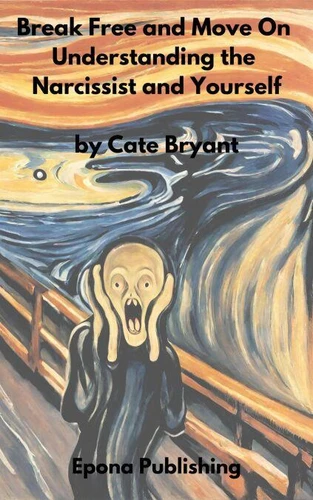Break Free and Move On; Understanding the Narcissist and Yourself
Par :Formats :
Disponible dans votre compte client Decitre ou Furet du Nord dès validation de votre commande. Le format ePub est :
- Compatible avec une lecture sur My Vivlio (smartphone, tablette, ordinateur)
- Compatible avec une lecture sur liseuses Vivlio
- Pour les liseuses autres que Vivlio, vous devez utiliser le logiciel Adobe Digital Edition. Non compatible avec la lecture sur les liseuses Kindle, Remarkable et Sony
 , qui est-ce ?
, qui est-ce ?Notre partenaire de plateforme de lecture numérique où vous retrouverez l'ensemble de vos ebooks gratuitement
Pour en savoir plus sur nos ebooks, consultez notre aide en ligne ici
- FormatePub
- ISBN8227651723
- EAN9798227651723
- Date de parution05/12/2024
- Protection num.pas de protection
- Infos supplémentairesepub
- ÉditeurBig Dog Books, LLC
Résumé
Break Free and Move On begins with a comprehensive description of narcissistic behaviours, an explanation of common terms and jargon, the cycle of relationship stages, and then addresses the thorny issue of what type of people narcissists choose. Traditionally it was believed that there were two types of victims, either codependent or exceedingly empathic or a combination of both. The latest alternative theory about a typical victim, who becomes a survivor, is someone who is high in Conscientiousness and Agreeableness.
This changes many preconceived ideas. First-person narratives are interspersed in the text with analysis, illustrating many of the points that are being made. A series of case studies are examined in the final chapter.
This changes many preconceived ideas. First-person narratives are interspersed in the text with analysis, illustrating many of the points that are being made. A series of case studies are examined in the final chapter.
Break Free and Move On begins with a comprehensive description of narcissistic behaviours, an explanation of common terms and jargon, the cycle of relationship stages, and then addresses the thorny issue of what type of people narcissists choose. Traditionally it was believed that there were two types of victims, either codependent or exceedingly empathic or a combination of both. The latest alternative theory about a typical victim, who becomes a survivor, is someone who is high in Conscientiousness and Agreeableness.
This changes many preconceived ideas. First-person narratives are interspersed in the text with analysis, illustrating many of the points that are being made. A series of case studies are examined in the final chapter.
This changes many preconceived ideas. First-person narratives are interspersed in the text with analysis, illustrating many of the points that are being made. A series of case studies are examined in the final chapter.



